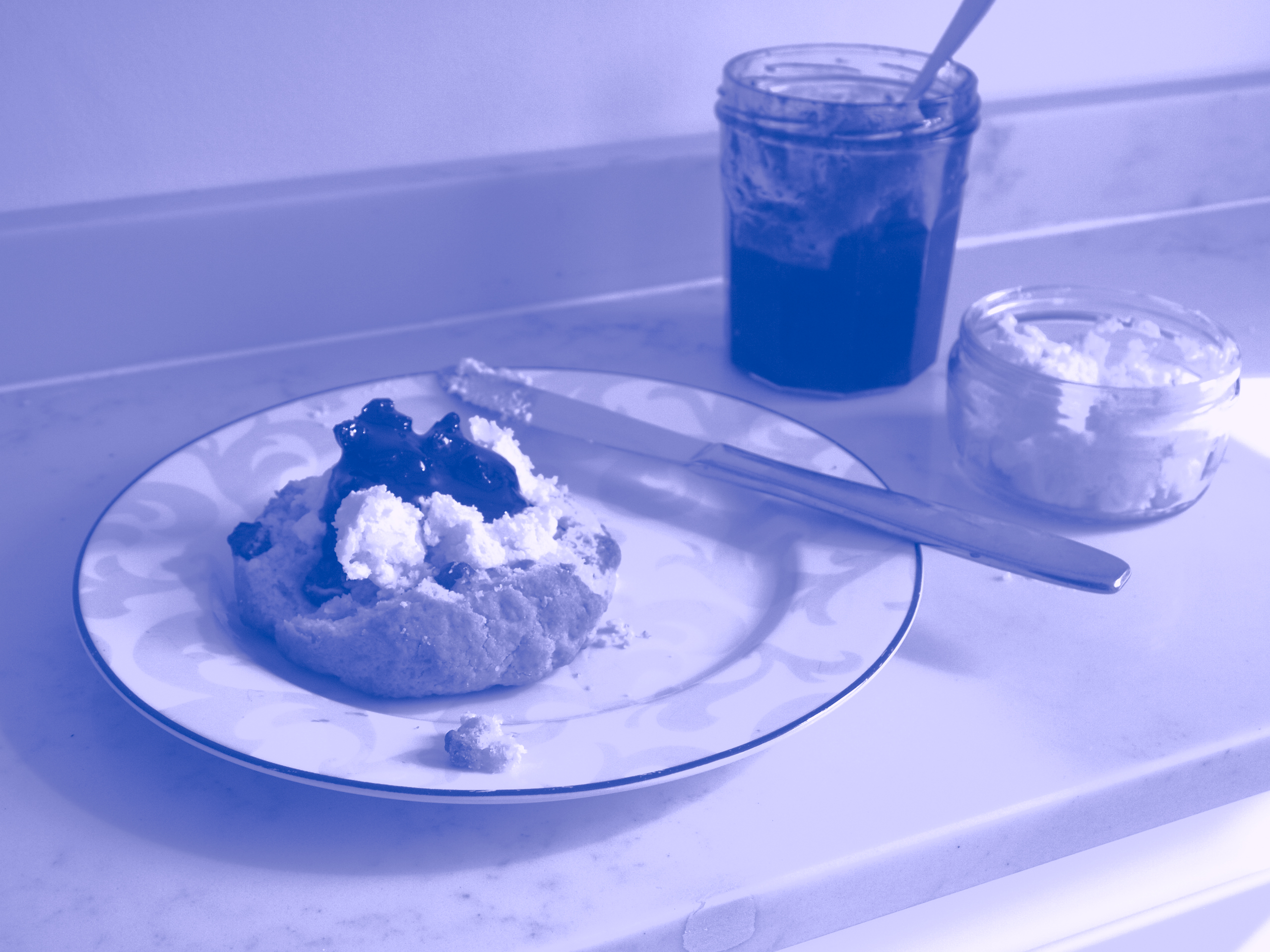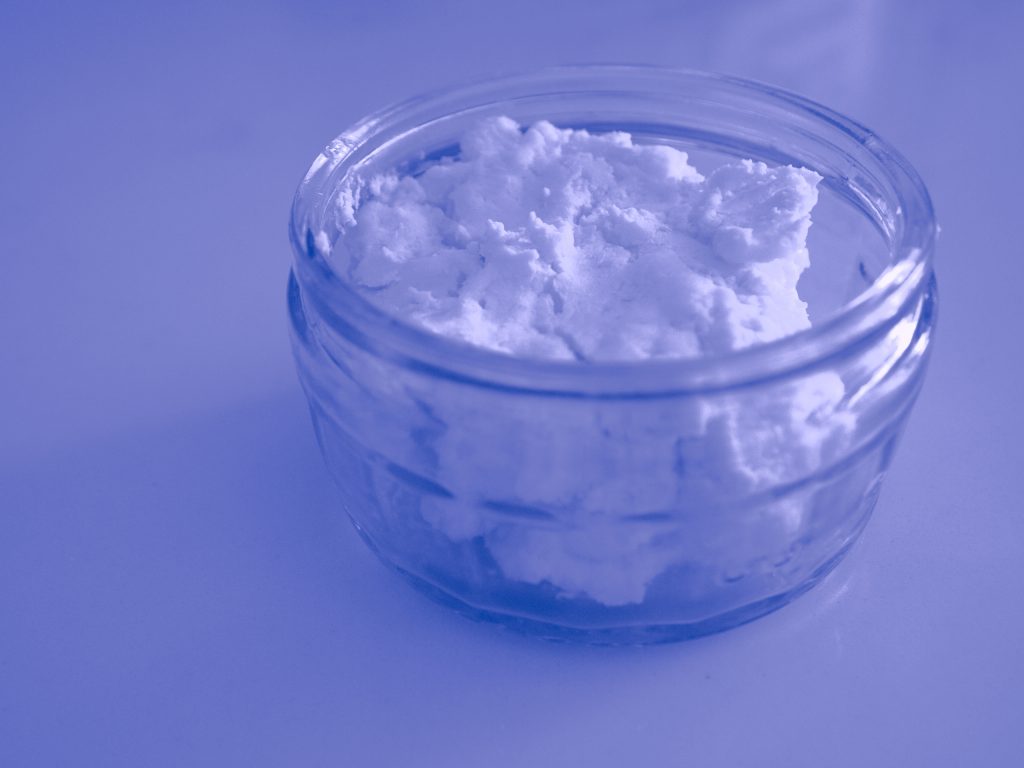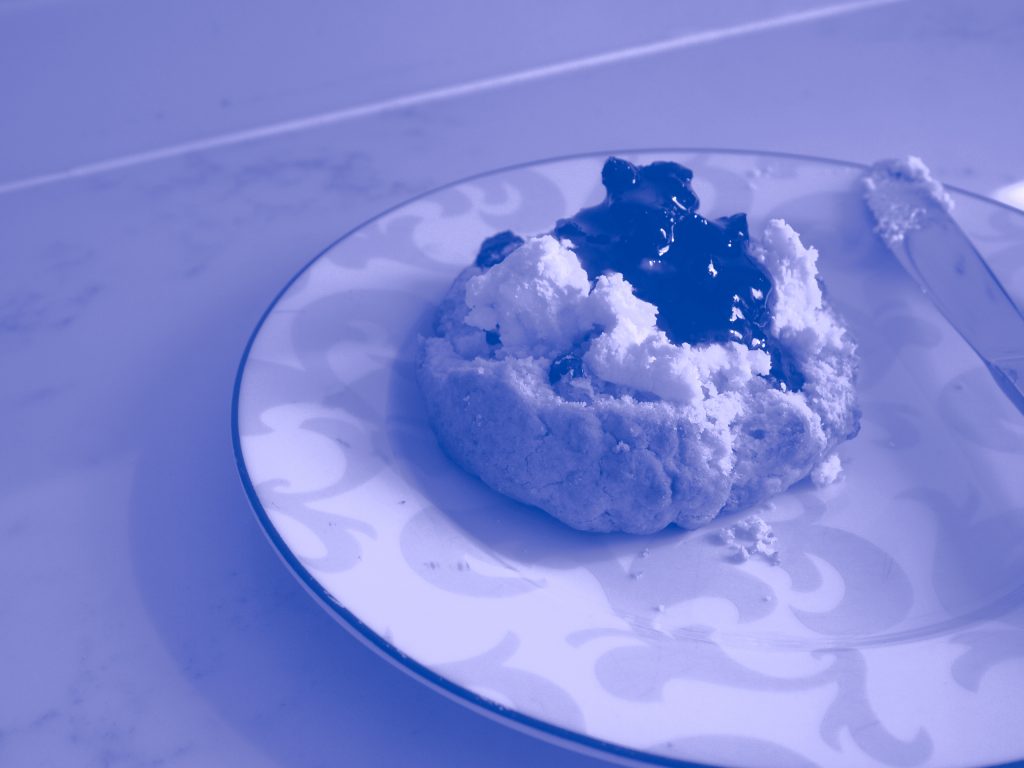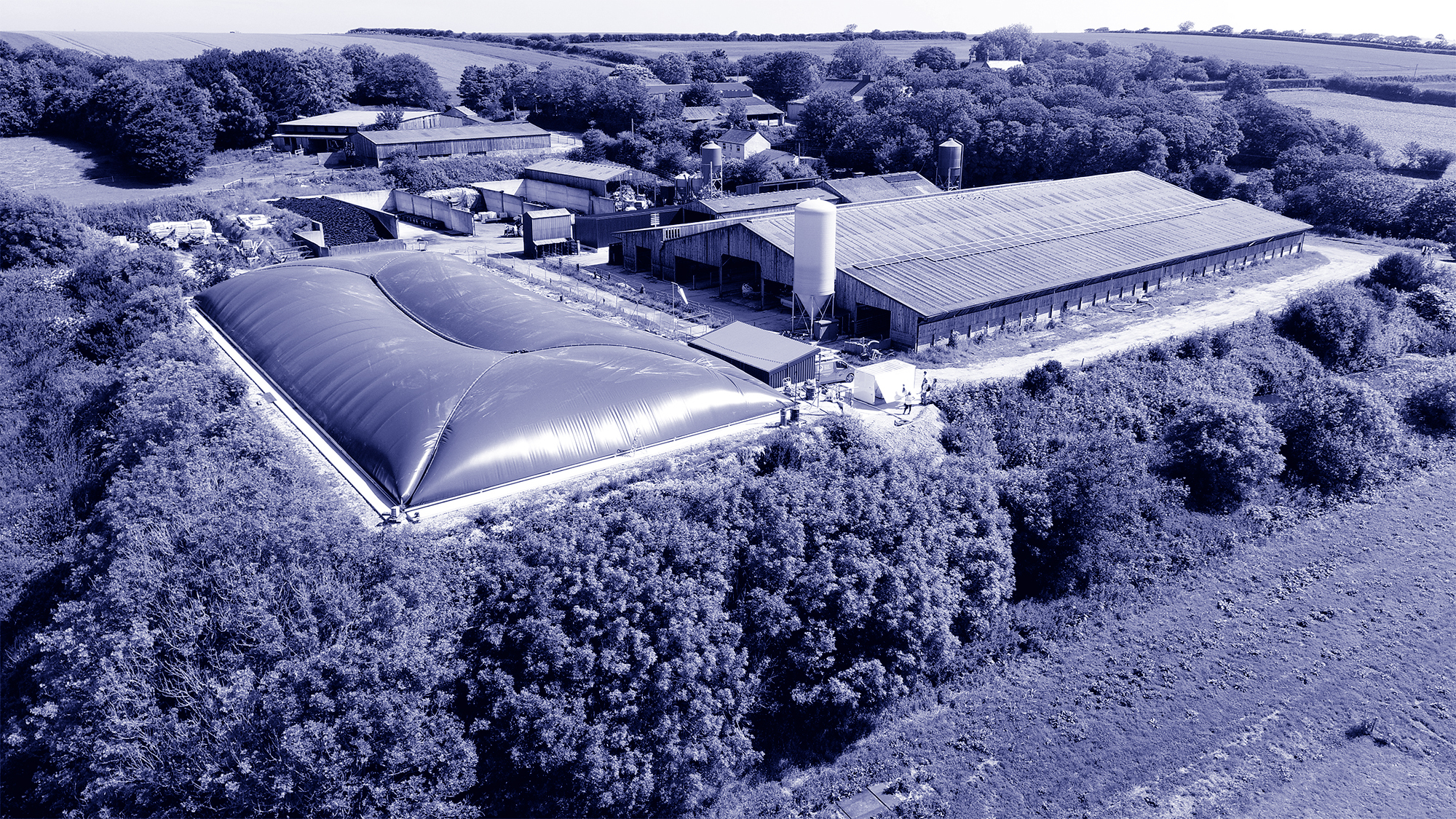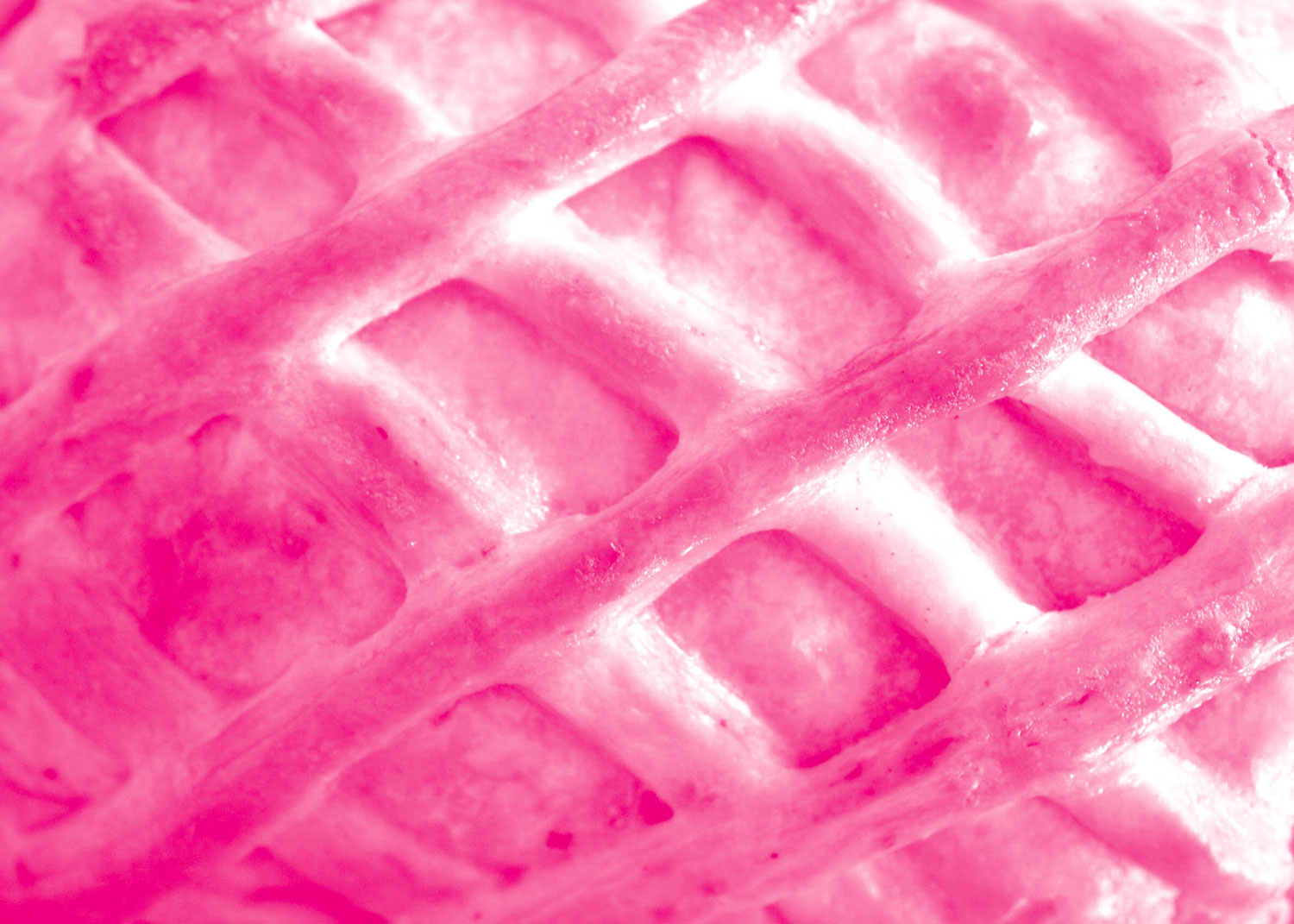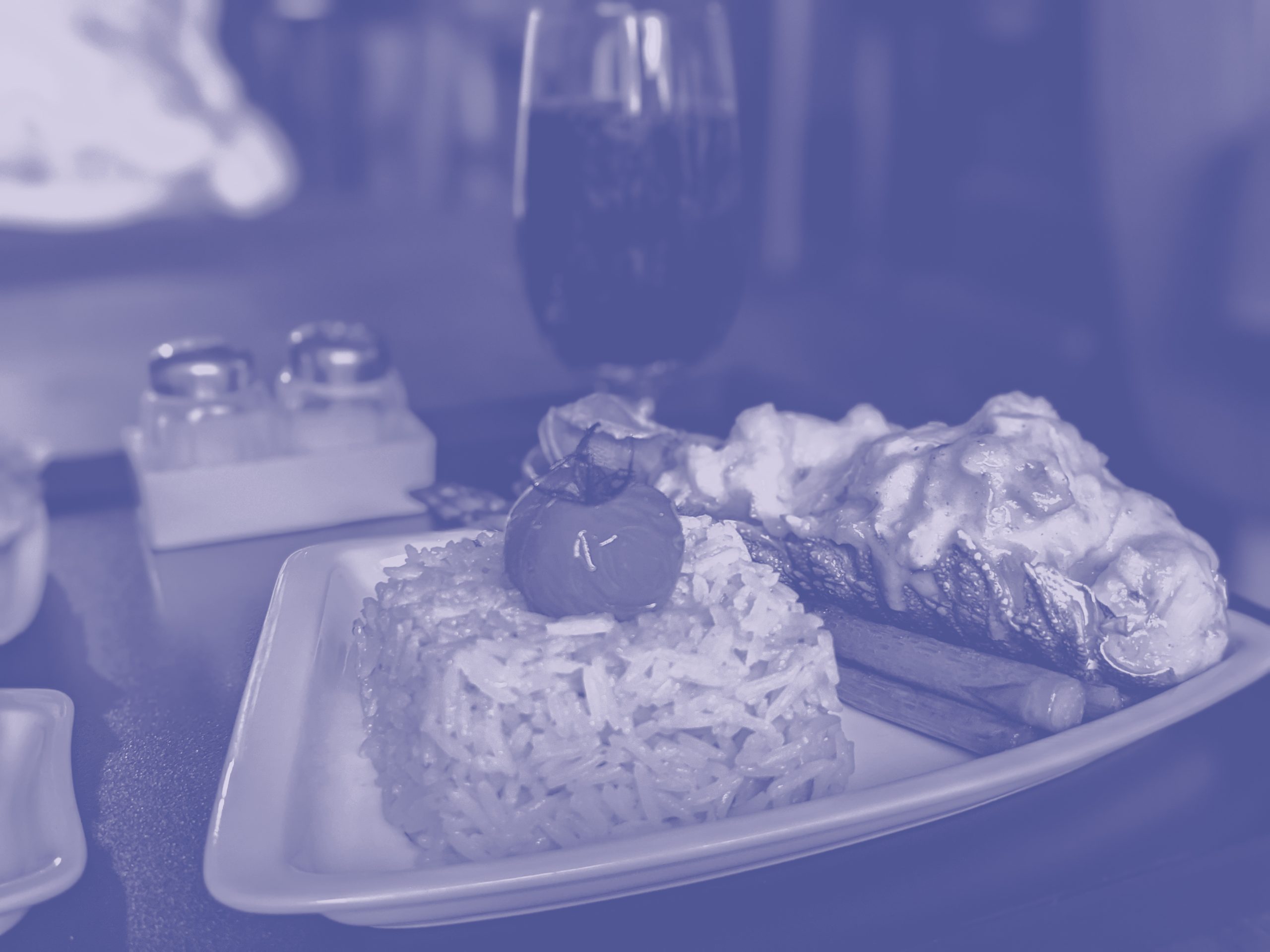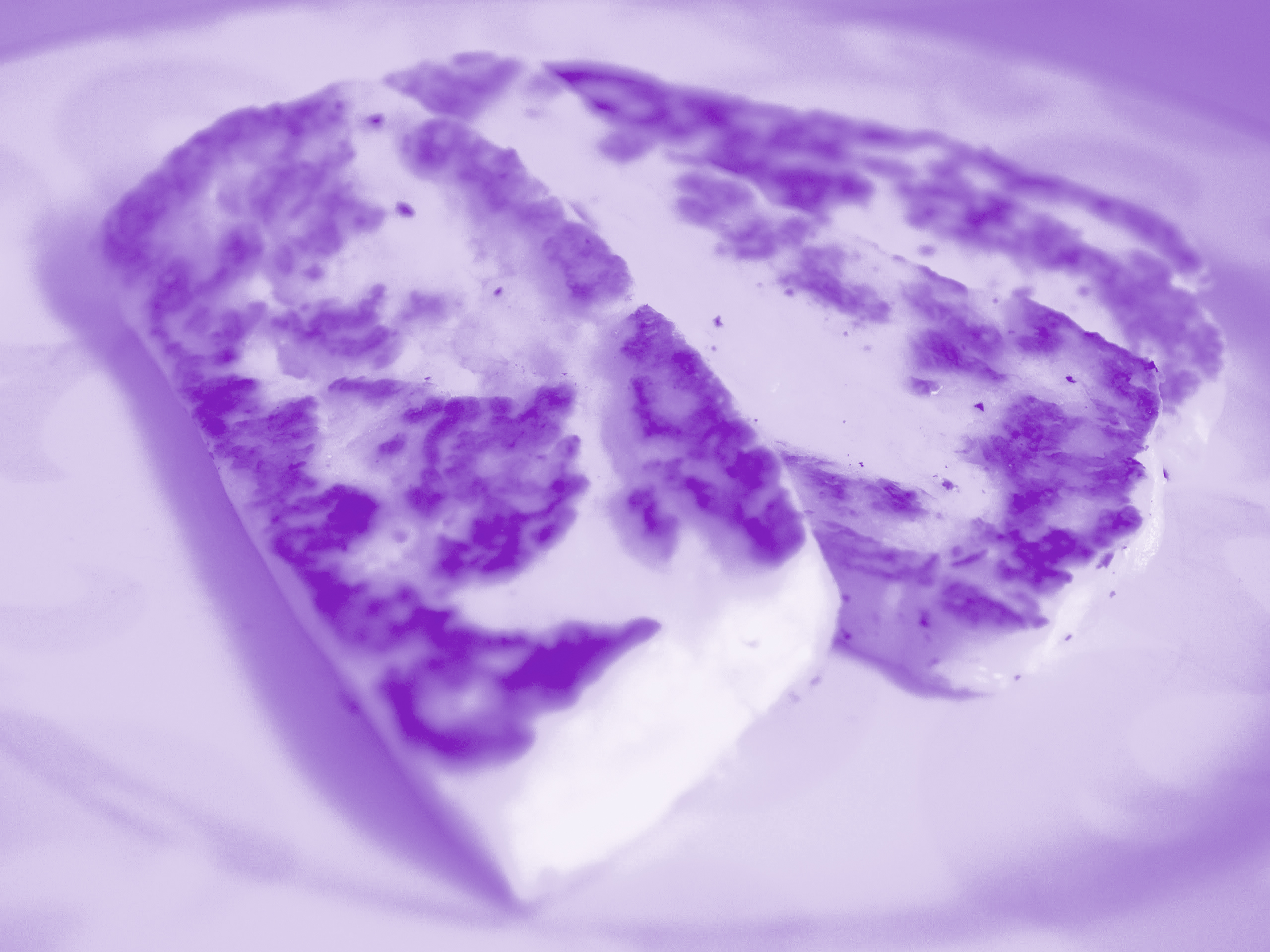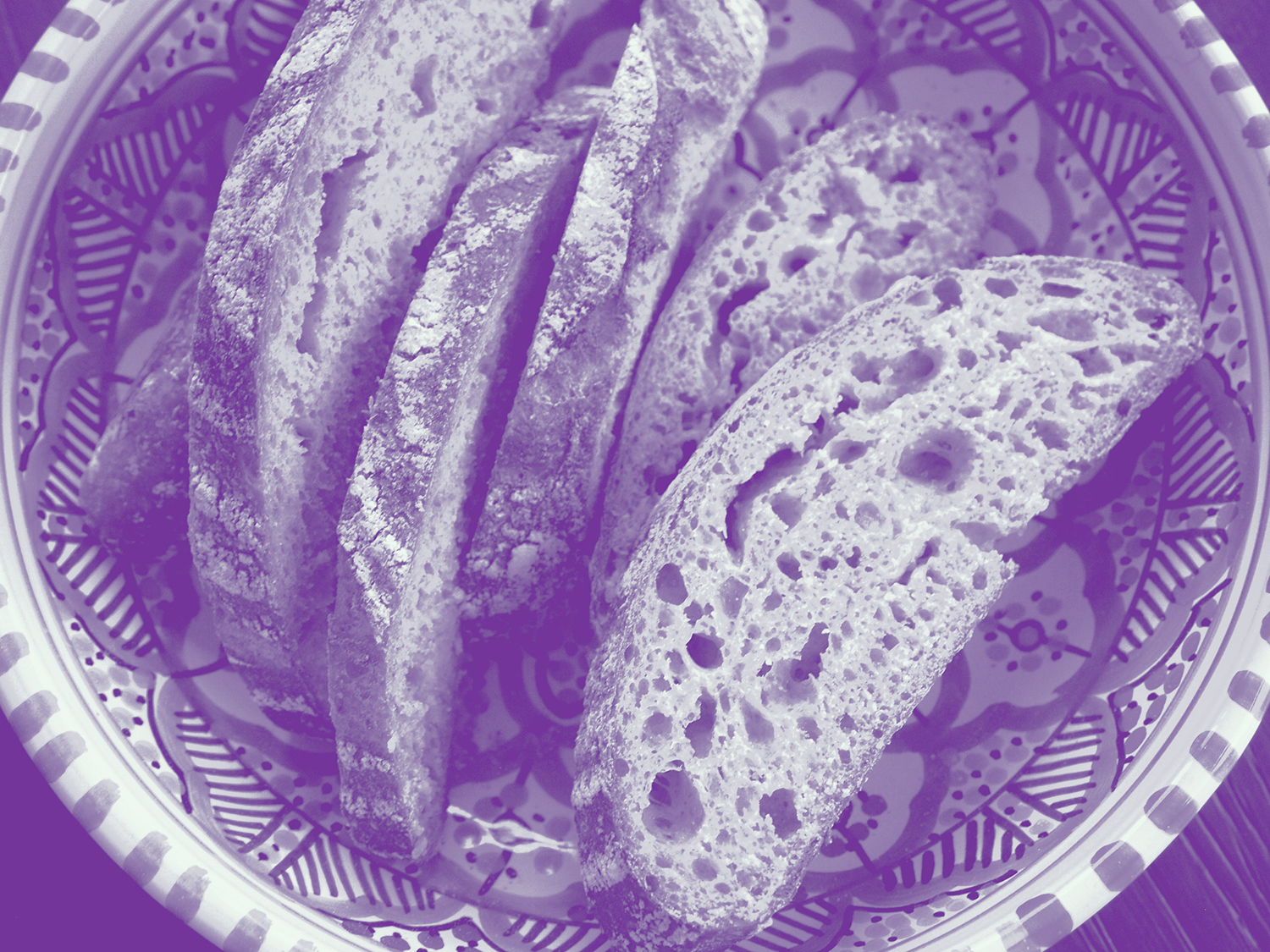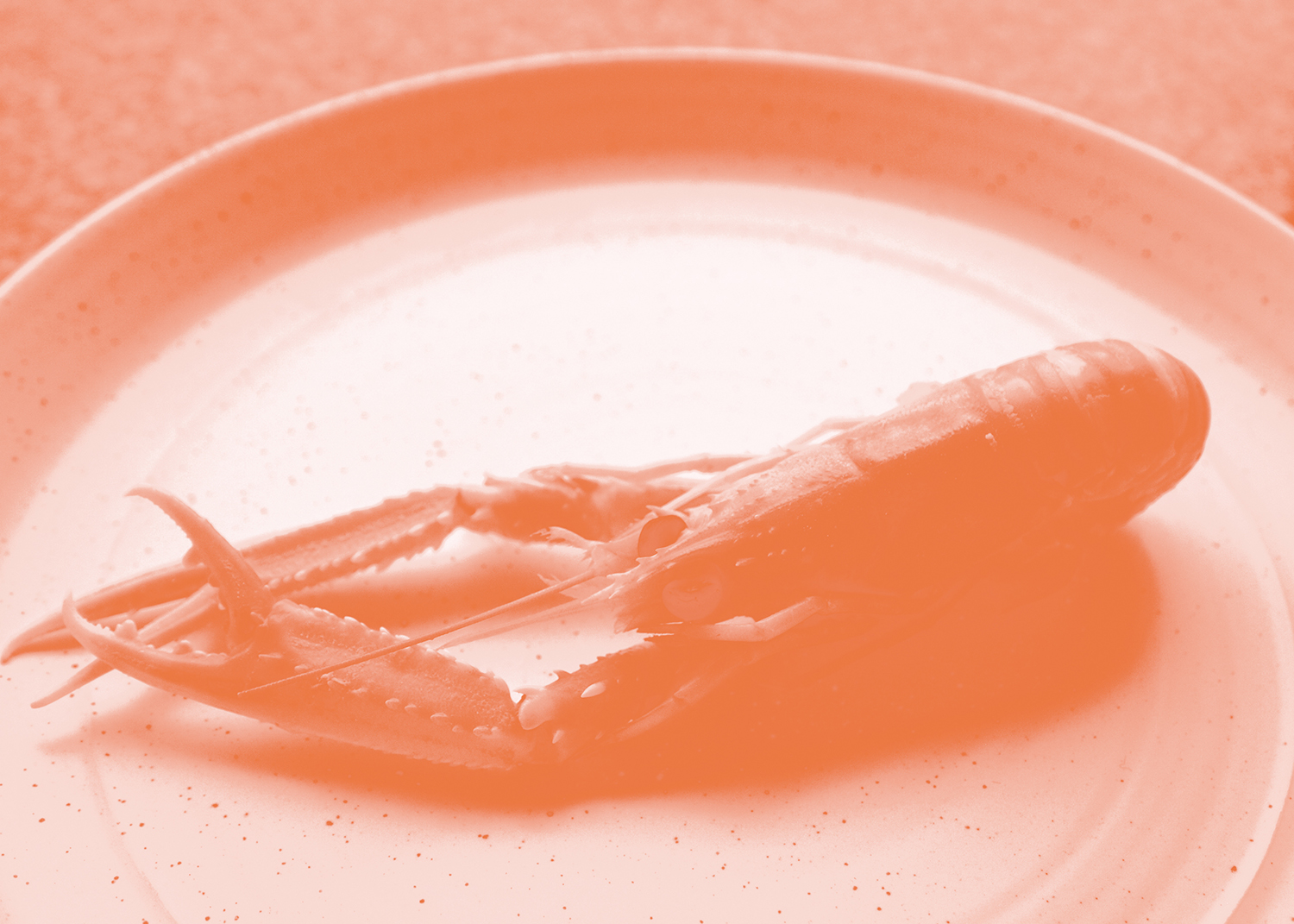Endangered Kitchen explores disappearing and lesser known food practices through the lens of contemporary politics, climate change and recipes.
It is summer and my friends and I are trundling along the Cornish coast. After a soggy night of camping, we have found ourselves in Newlyn and park our rented minivan opposite a cream-colored cornershop. A modest sign above the large window announces the ice cream parlor of S. JELBERT in a sea-blue sans-serif font. Once inside, the man behind the counter doesn’t need to know anything more than how many of us there are. He doesn’t need to know how many scoops or which flavours, because there is only one option on the menu. I am handed a cone, latticed and sturdy, the foundation for a generous scoop of vanilla ice cream and another (surprise) scoop of clotted cream, topped by a chocolate flake chimney. This confection, known as Cornish ice cream, is generous and rich, much more substantial than any ice cream that I have eaten before.
Recently, I spoke with Jelbert’s to discuss the post-pandemic fate of the parlor and Cornish ice cream. Although Jelbert’s has had to ditch the clotted cream scoop and chocolate flake for hygienic reasons (for which there was public outcry), they remain positive. Although this particular Cornish icon has survived for over 60 years, having served ice cream through many crises, I wonder whether today’s issues are mounting at pace for the Cornish dairy industry and all that is connected to it. With the closure of many restaurants, cafes and bars during the COVID-19 pandemic, the demand for milk has dipped. However, the demand for dairy has been in steady decline even prior to the pandemic. According to the Agricultural and Horticulture Development Board, the UK is drinking 50% less milk than it did in 1974, despite constant efforts by pro-milk campaigners, with initiatives such as Februdairy, an annual event where the consumer is encouraged to eat more dairy throughout the month of February. But Februdairy is still dwarfed by Veganuary, a month-long event which asks the British public to commit to one month of veganism every January. In 2021, the Veganuary campaign reported the highest number of sign-ups ever, with over half a million Brits attempting the annual challenge. Of those who signed up, many decided to make permanent, animal product-free lifestyle changes. The rise in dairy-free diets and the ever-growing plant-based milk scene is bad news for Cornwall, the third largest milk producing region in the UK. The region, which is also one of the poorest in the UK, hinges on the food and agriculture sector, with over 12% of the Cornish population working in the industry.
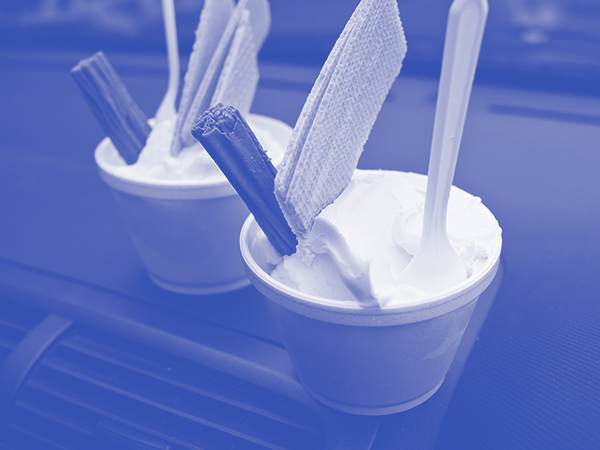
Conversely, the pandemic has also decimated overseas travel for the foreseeable future, which means more Brits than usual are now preparing to holiday in Cornwall this summer, which will no doubt help a struggling Cornish economy. With the increase in tourism and a predicted rise in temperature thanks to global warming (which means more excuse to eat ice cream), it seems Cornish ice cream, unlike the ubiquitous glass of milk, may be in high demand.
When I asked Jelbert’s what makes Cornwall’s ice cream so popular across the country, they noted that customers were drawn to the region-specific, fresh ingredients and the small-batch nature of the ice cream. ‘It’s such a varied industry. It’s not the same as supermarket ice cream, our product is so much more bespoke. Cornish milk is great, our cows graze in open fields and our shop, as with a lot of other [parlors], use locally sourced milk. We can only make a certain amount of ice cream per day, we’re not [making ice cream] on a big scale and I think people appreciate that because the local touch is a bit more prevalent.’ A greater appreciation for artisanal foods has been noted the world over, perhaps as a direct retaliation against the globalization of food and agriculture. And, of course, we both agree that Cornwall’s clotted cream, with which traditional Cornish ice cream is made, might have something to do with it.
Clotted cream is somewhere between butter and heavy cream. It is tangy, rich and often bright yellow due to the high levels of beta carotene found in the grass that the cows feed on – like Cornish gold. It washed up hundreds of years ago on the southernmost shores of the UK, along with the Phoenicians, who introduced their method of preserving milk by gentle heating whilst trading their spices for Cornish tin. The Phoenicians came from a part of the world now known as Syria, Lebanon and Israel and clotted cream appears to be a distant cousin of Middle Eastern ashta. The only difference between the two is that clotted cream is made with cow’s milk and ashta with sheep or goat’s milk. Regardless of its origins, clotted cream is now firmly embedded in Cornish (and, let’s not forget, neighboring Devon’s) cuisine, most commonly slathered on scones alongside jam as a part of what is known as Cream Tea. In the early 1800s, enterprising Italians arriving in Cornwall also saw the value of both high quality Cornish cow’s milk and luxurious clotted cream and began to make gelato with the local produce.
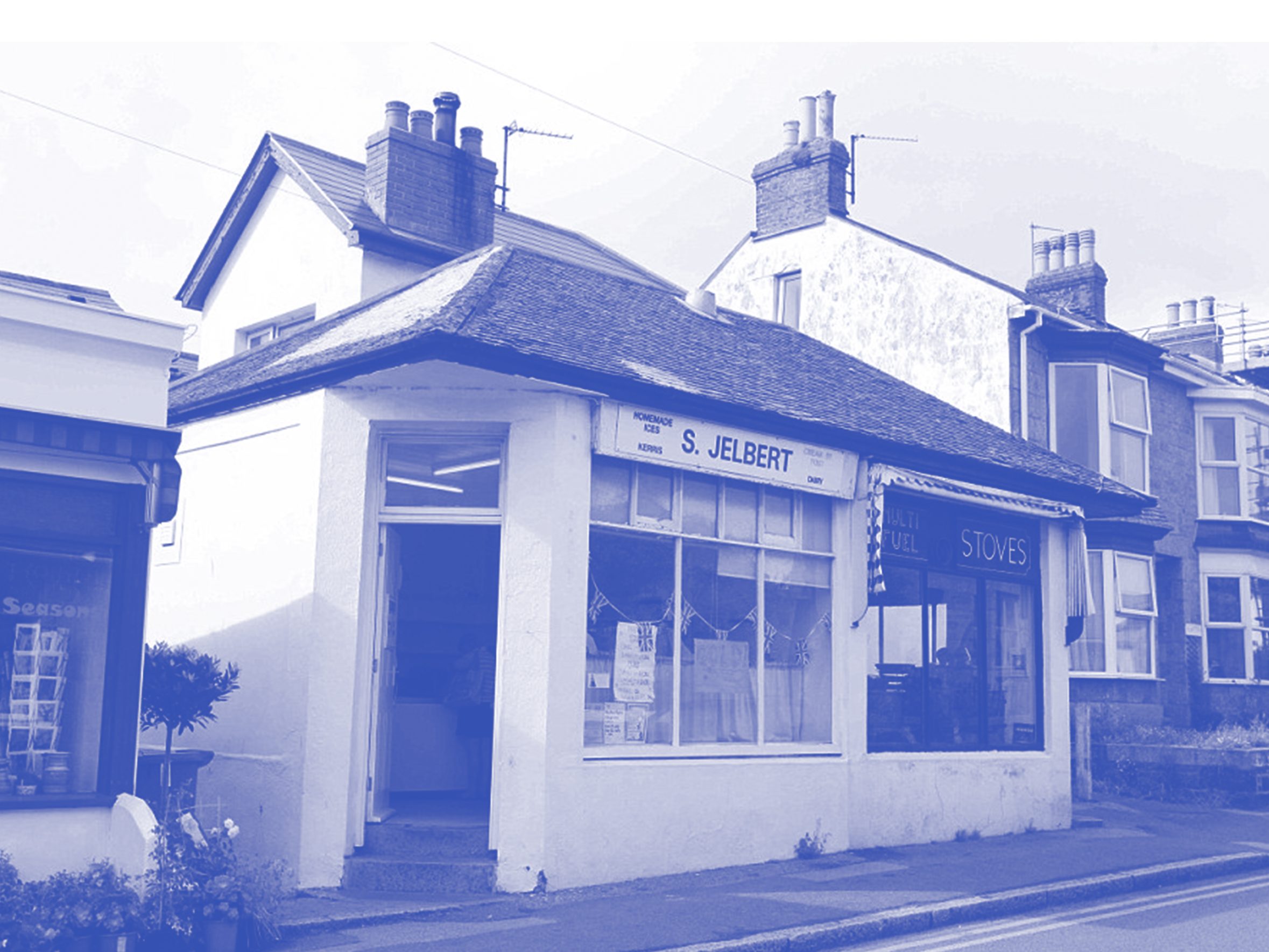
Fast forward 200 years and the Cornish ice cream industry continues to grow. ‘It’s hard to compare all the ice cream parlours because they’re all different companies with different goals,’ say Jelbert’s. I think of the vastly different Mr. B’s parlour in Hayle, about a half hour’s drive from Jelbert’s, with a colourful and dizzying range of flavours that reference an Italian gelateria, a nod to those early ice cream pioneers. On another end of the spectrum there is Moomaid’s of Zennor, a dairy with a small franchise of parlours which offer a slick and polished ice cream experience with well put-together branding and a concise selection of ice cream flavours. The wider dairy industry has also realized the Brits’ love of Cornish ice cream, entering the market with their own renditions of the frosty treat. With prices of milk falling and a drop in milk consumption, some Cornish dairies such as Treleavens and Callestick Farm have diversified to ice cream production in recent years. By producing less of a more expensive product, artisanal Cornish ice cream may be just the thing to keep these dairies afloat.
Whilst I am not trying to defend the dairy industry or the devastating environmental impact it has created, its total collapse would wipe almost 3.3 billion Great British pounds from the Cornish economy. As many Cornish farms are small or family run, it would also damage the Cornish psyche through losses of livelihood and generational knowledge.
How do we strike a balance between damaging the environment and damaging livelihoods? Perhaps it is unrealistic, but I like to think that a solution lies in the artisanal, with less milk and more ice cream —an ice cream interlude of sorts, until the agricultural industry can diversify enough that it does not rely on dairy farming. One of the many problems with the dairy industry is scale and the short shelf life of milk. Dairy cows can only produce milk when they are pregnant and are often artificially inseminated to make sure they can keep up production. The ethics of this practice have been widely debated in recent years. If we look at ice cream, however, we have a seasonal product that is, unlike milk, freezable. Could dairy farmers benefit by looking at the natural milking capacity of cows and using only what each heifer naturally produces to make smaller batch, more expensive products with a longer shelf life, such as clotted cream, ice cream and cheese —foods which Cornwall makes extremely well? As some dairies have already found, this could even out financial pressures, as well as the pressures humans have placed on the cows themselves.
I imagine some kind of Willy Wonka-esque future for Cornwall, with Britain no longer encouraged to ‘drinka pinta milka day,’ as we were post WWII. Instead, to support farms and local businesses, we are given Cornish ice cream – a daily scoop of joy. In my mind, of course, it would be a Jelbert’s, the archetype of the Cornish ice cream and connected to many memories of proper (rainy) English holidays.
Making Clotted Cream
Clotted cream is a key ingredient in Cornish ice cream. Clotting cream is by no means a complicated task but it does require finessing your technique — you may have to try a couple of times before it’s right.
The key to clotting is to remember ‘low and slow’ and, like many other preserving methods, time is a key ingredient. The cream should not be baked, but gently warmed. Consistency is also important so make sure your oven has a nice, even heat.
To ensure an even heat, I have found that the best receptacle for clotting cream is a heavy, deep, ceramic bowl. Make sure that the cream is not nearing the top of the bowl, it needs space.
You can use the cream made from sheep or goat milk with similar results. The flavors are dramatically different and this makes the clotted cream far more similar to ‘ashta,’ what can be assumed is the original version of clotted cream.
Ingredients
- 400 g cream (cow, sheep or goat). For every 400 g, you should yield around 70 – 100 g of clotted cream. Use the most unpasteurized cream you can find, either from a health shop or farmers market. I buy unpasteurized cream from my local butchers.
- Large, heavy, deep ceramic bowl
- An oven that keeps an even temperature
- Tin foil
- Quite a lot of time
Directions
1. Preheat oven to 170oC
2. Pour cream into the ceramic bowl and seal the bowl well with tin foil.
3. Place the bowl of cream into the middle shelf of the oven, then turn oven down to 70oC
4. Leave to heat for a minimum 12 hours. The longer the better, I would recommend 15 hours.
5. When ready, turn the oven off and leave the cream to cool.
6. Transfer the cream from the oven to the fridge and leave to set for a further 12 hours minimum.
7. Once time’s up, take the cream out of the fridge and uncover the bowl. You will notice that the cream has separated. The top of the cream will be dense and stiff, whereas the bottom will still be liquid. The top of the cream is now clotted, the bottom is now buttermilk.
8. Separate the two parts of the cream, I find a collider helps. Whip the clotted cream to get rid of any lumps.
9. Keep hold of the buttermilk for making scones, soda bread, pancakes or batter.
10. Both clotted cream and buttermilk keep for a couple of weeks.
How to cook with and eat clotted cream
- Replace any mention of cream in an ice cream recipe with clotted cream for a Cornish style ice cream.
- For the maximum Cornish experience, top a scoop of ice cream with a dollop of extra clotted cream. Stick a flake in it for dramatic effect.
- Slather it on scones along with jam.
- Simmer gently with lemon juice until it is really, really thick, then mix in orange blossom or rose water to make a traditional Lebanese dessert.
